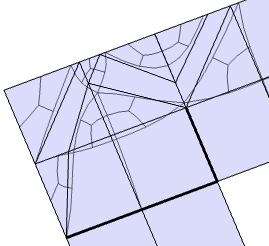Modifying the Mesh | |||
| |||
Click Mesh Tools
 .
.
Tip: You can also access this command by pressing ALT+SHIFT+T. Select the surface.
A Tools Palette is displayed.

The following icons let you:
-
 add faces (it is selected by default)
add faces (it is selected by default)  move the vertex
move the vertex cut the face
cut the face cut the mesh by the plane
cut the mesh by the plane merge vertices
merge vertices regularize into a face
regularize into a face erase a face, edge or vertices
erase a face, edge or vertices apply the command
apply the command
-
Click Add Face
 (if not already selected).
(if not already selected).
- Click an edge to extrude it, or
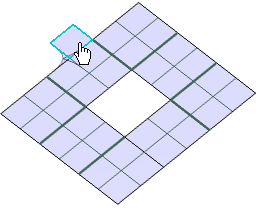
- Click an edge and move the mouse to extrude in the direction defined by the manipulation (in the view plane), or
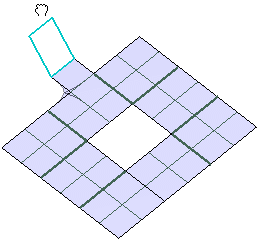
- Click and use the Ctrl key to extrude in corner (as for a fill).
The face is created by an extrusion along a direction.Tip: You can also access this command by pressing Ctrl+Shift+J. - Click an edge to extrude it, or
Click Move Vertex
 and move the preselected vertex in the face that is the closest to the mouse.
and move the preselected vertex in the face that is the closest to the mouse.
The Tools Palette is slightly modified to show the AttenuationTip: You can also access this command by pressing Ctrl+Shift+M.  icon.
icon.A plane is previewed by an arc of a circle on the manipulator.
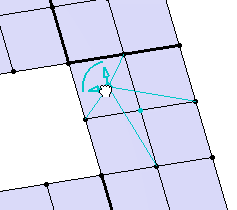
Note: Pressing the Ctrl key lets you manipulate the vertex along the edge (i.e. the mesh line) that is the closest to the mouse. The direction of the manipulation is previewed by an arrow.
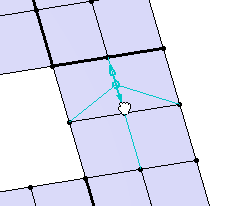
Click Cut Face
 and select the starting and end points.
and select the starting and end points.
It lets you cut the face from a point on an edge to another point on another edge belonging to the same surface.Tip: You can also access this command by pressing Ctrl+Shift+U. 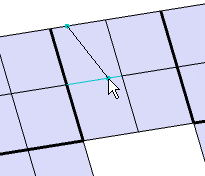
Note:
- When a cut is made, the ending point of the cut is by default the starting point of the following cut. Therefore when you select an ending point that is not on the same face as the starting point, it becomes a new starting point.
- Pressing the Ctrl key lets you select the closest vertex:
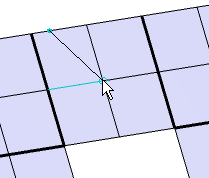
Click Cut Mesh by Plane
 and select the starting and end points.
and select the starting and end points.
It lets you to cut all the faces that have an intersection with the plane (defined by two points and orthogonal to the view):Tip: You can also access this command by pressing Ctrl+Shift+W. 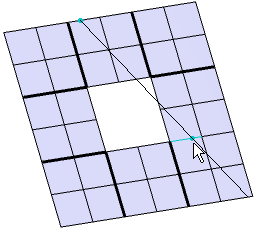
Note: You can select an existing plane (click
 first to be able to select it)
first to be able to select it)Click Merge Vertices
 and select either:
and select either: - a face
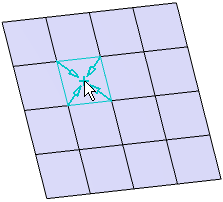
All the vertices of this face are merged on a single vertex. By default, this vertex is positioned in the barycenter of the vertices to be merged.
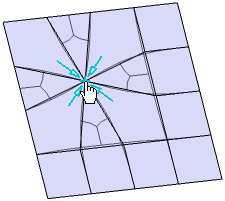
Note: You can change the position of the vertex by left-clicking and moving the mouse:
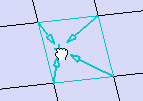
- an edge:
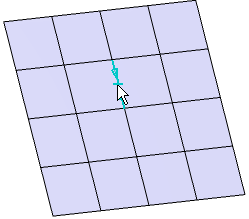
All the vertices of the edge are merged on a single vertex. By default this vertex is positioned in the middle of the edge.
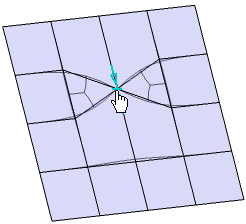
Note: You can change the position of the vertex by left-clicking and moving the mouse:
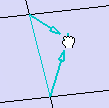
- a vertex:
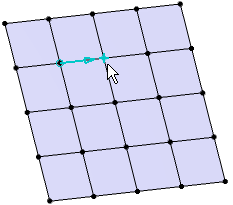
Select a second nearby vertex to merge the first vertex with this one:
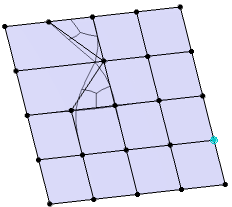
Note: You can change the position of the merged vertex by left-clicking and moving the mouse once you have selected the first vertex:
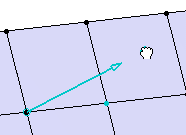
Tip: You can also access this command by pressing Ctrl+Shift+V. - a face
Click Regularization
 to replace the N side faces by triangles and quadrangles and select the face to regularize.
to replace the N side faces by triangles and quadrangles and select the face to regularize.Tip: You can also access this command by pressing Ctrl+Shift+T. Before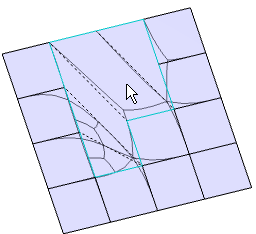 After
After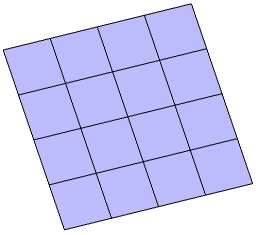
Warning: This command is available if you have only one current regularization to perform. Click Erase
 to erase either:
to erase either:- a face:
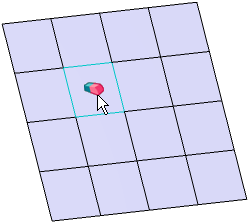
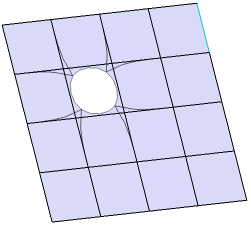
- an edge:
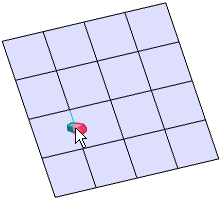
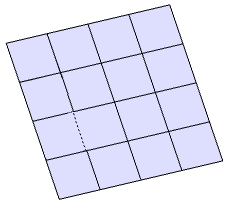
Note: You cannot erase a border edge.
- a vertex:
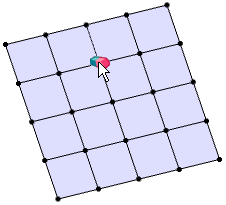
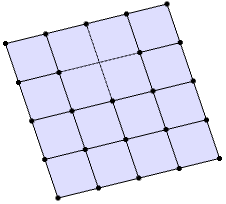
Tip: You can also access this command by pressing Ctrl+Shift+D. - a face:
Click Apply (Enter)
 to validate the command.
to validate the command.When a face is made of more than four edges, it is automatically built from a face made of three or four edges only. These internal edges are displayed as dashed lines...
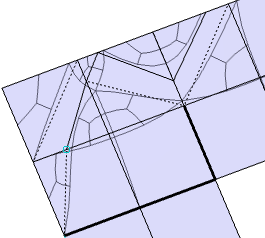
... that become full and can be manipulated once you validate the command:
